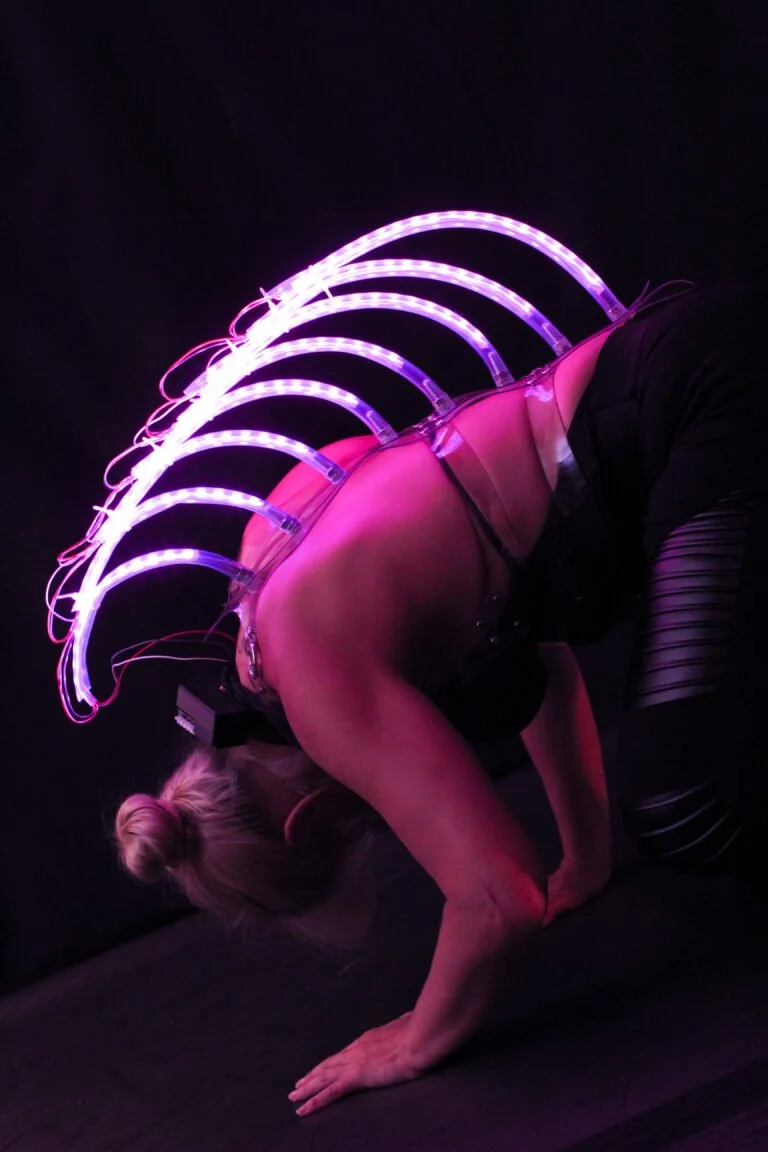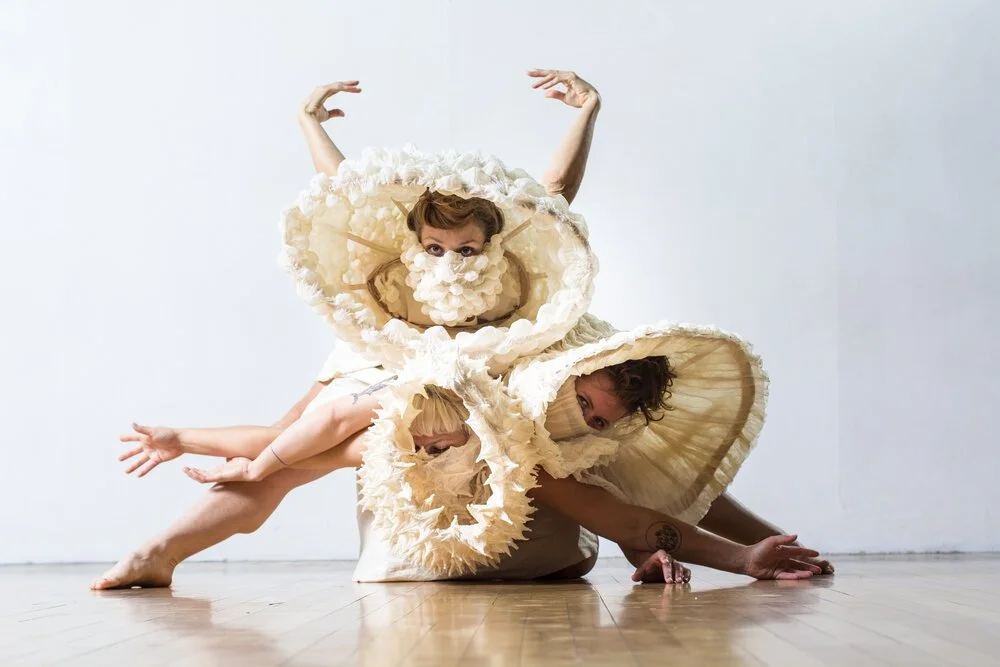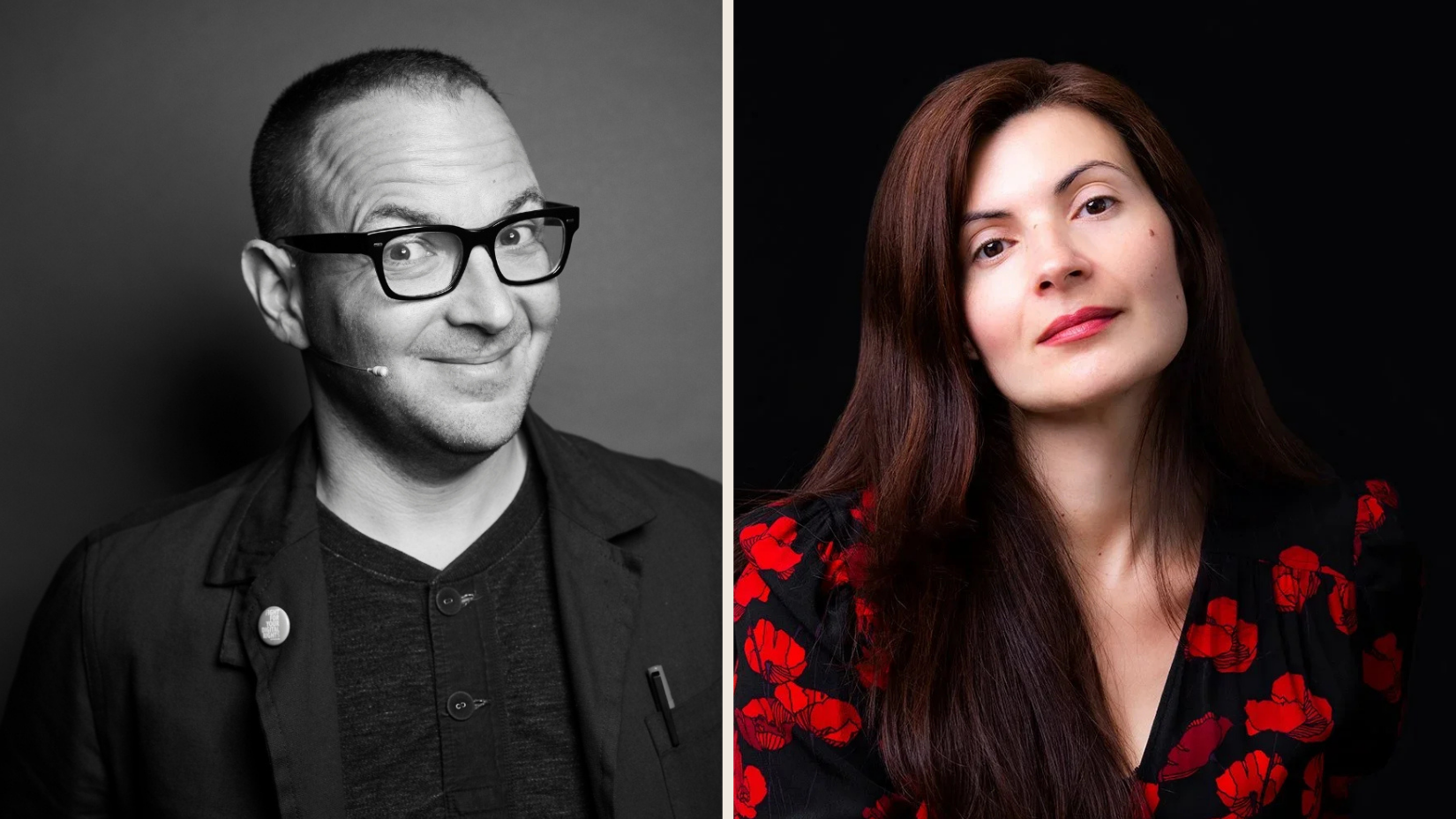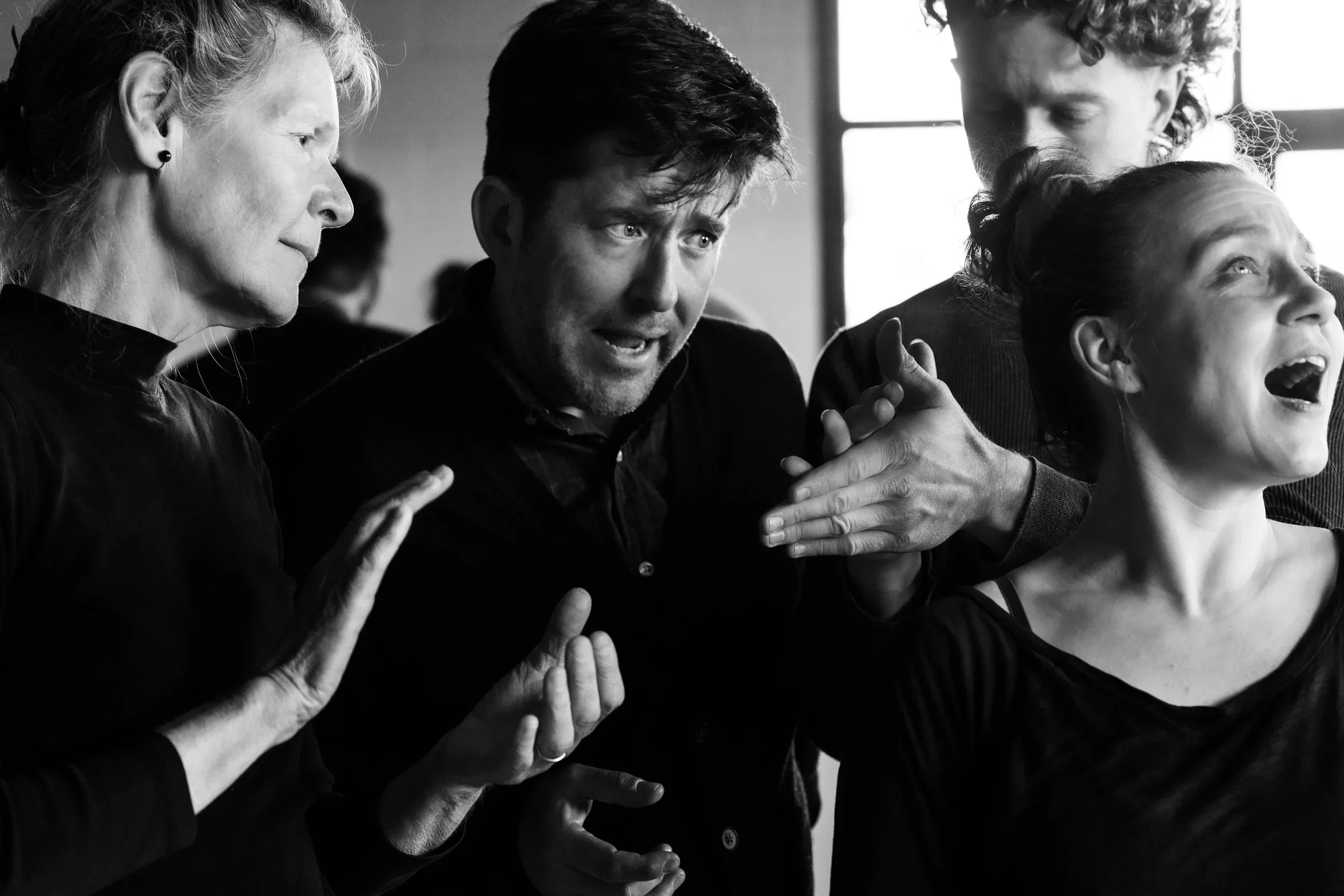Dance review: Emmalena Fredriksson’s Ecdysis | Soft Palate transports viewers through reality, memories, and dreams
At Dancing on the Edge, an LED-lit spine exoskeleton and white funnel-shaped headpieces create an otherworldly aura
Emmalena Fredriksson in Ecdysis. Photo by Luciana Freire D’Anunciação
The Dancing on the Edge festival wraps up on July 15
ADVANCED TECHNOLOGICAL creations are rarely paired with dance; the former tend to be stiffly mechanical, while the latter is instinctively human in its breathwork, making the very idea of the combination counterintuitive. It takes true conceptual prowess to meld the two seamlessly—and Emmalena Fredriksson does just that at the Dancing on the Edge festival.
Her double bill Ecdysis | Soft Palate places costuming and set design in the limelight, with props that emphasize storylines of post-apocalyptic transformation. It’s a show that urges viewers to ponder the intersection of reality and memory states.
Ecdysis. Photo by Luciana Freire D’Anunciação
In solo work Ecdysis, Fredriksson wears a magnificent creation: a light-up spine exoskeleton that extends to strikingly envelop her forehead. The piece of technology was crafted by Bob Pritchard of the UBC School of Music, with help from costume and set designer Alaia Hamer and programmer Daniel Tsuii. Its LED lights take on a myriad of hues throughout the performance: at times the spine is a kaleidoscopically morphing rainbow, or a solid cool-toned violet, or a frosty blue that flashes to the beat of the music.
Captivating lighting design by Kyla Gardiner and set design by Hamer add to the visual impact. Large barrels and an LED pole glow neon teal and orange; the metal-sculpted upper body of a mannequin head stands tall; and white linen cloth hangs from the ceiling asymmetrically, giving it a torn appearance. Strewn haphazardly, the different objects create an alien energy of displacement.
That same off-kilter vibe is echoed in Fredriksson’s body language throughout Ecdysis. When she rolls up from a position lying on the floor and then collapses back down, her spine ripples with the effort. She creeps with animal-like hesitancy, but there’s also a robotic quality to her arm gestures and torso swivels; her body lilts and stutters to a stop after moving, instead of transitioning smoothly.
At one point, Fredriksson shifts into downward dog, her leather glove-clad hands balled into fists against the floor, resembling hooves. She begins to take deer-like steps on all fours, one leg at a time bending up at the knee behind her as she moves forward.
The audience is left wondering whether she’s human, animal, or machine—an uneasiness that is amplified by a soundtrack from electro-innovative Vancouver composer Filip Górecki. Lurching, ghastly tones fill the air, the dissonant noises evoking imagery of a barren landscape.
Together, the team of artists working on Ecdysis conjure a hauntingly mesmerizing energy.
A similarly unearthly tone carries over into Fredriksson’s sister piece, Soft Palate. Danced by Fredriksson, Hayley Gawthrop, and Jessica Keeling, the trio immediately takes on a soft dreamscape feel, despite using the same set design as Ecdysis. The dancers wear white funnel-shaped headpieces of different fabric textures that protrude up over their faces like malleable cones; one is spiky, another made from 360-surround accordion folds, and a third that’s more cloud-like.
Near the end of the work, they shed their headpieces. They look around at the audience members as though they have suddenly gained sentience, breaking the fourth wall, and acutely aware that a world exists outside their periphery.
The moment is a callback to what audiences witness in Ecdysis: a startled Fredriksson realizes there are people watching her, and walks slowly around the room, gazing at onlookers head-on with an expression of despair. It’s almost as if she’s put on display in a glass enclosure; a foreign being plucked from an unknown realm. She walks directly up to one audience member, and reaches out her hand as if to touch them, mere centimetres away—but then pulls back abruptly, confused. The scene is so authentically compelling, we nearly forget that Fredriksson is performing.
Soft Palate. Photo by Luciana Freire D’Anunciação
Fredriksson commits fully to offbeat choreographic choices throughout Soft Palate. The dancers join hands and break into a lilted Irish-reminiscent jig, travelling sideways across the floor. Later, they embark on a series of exaggerated runs around the stage, arms slapping their sides as they pump back and forth.
Eventually, we question whether the performers in Soft Palate might be parasitic organisms in a symbiotic relationship. Gawthrop and Keeling engage in a fight of sorts, pushing each other back and forth in a locked-arm, head-to-head struggle. Their headpieces interconnect, joining their faces together as if one dancer is sucking the life force out of the other. Gawthrop is weakened and collapses, rolling onto their back with arms and legs dangling upward into the air like a baby suspended in a womb; Keeling dances on, a beneficiary in the exchange.
Seemingly out of nowhere, hundreds upon hundreds of ping pong balls start clanging out of a metal duct on one end of the stage. They bounce out over the floor, and Keeling rolls and whirls herself amid them, flinging balls to and fro with her limbs. It’s a surreal sight.
Above all, Ecdysis and Soft Palate are well-thought-out works, visually astute in all ways, shapes, and forms. Somehow, the pieces are comforting—perhaps because the dancers are so unflinching in their dedication to embodying peculiarity.















